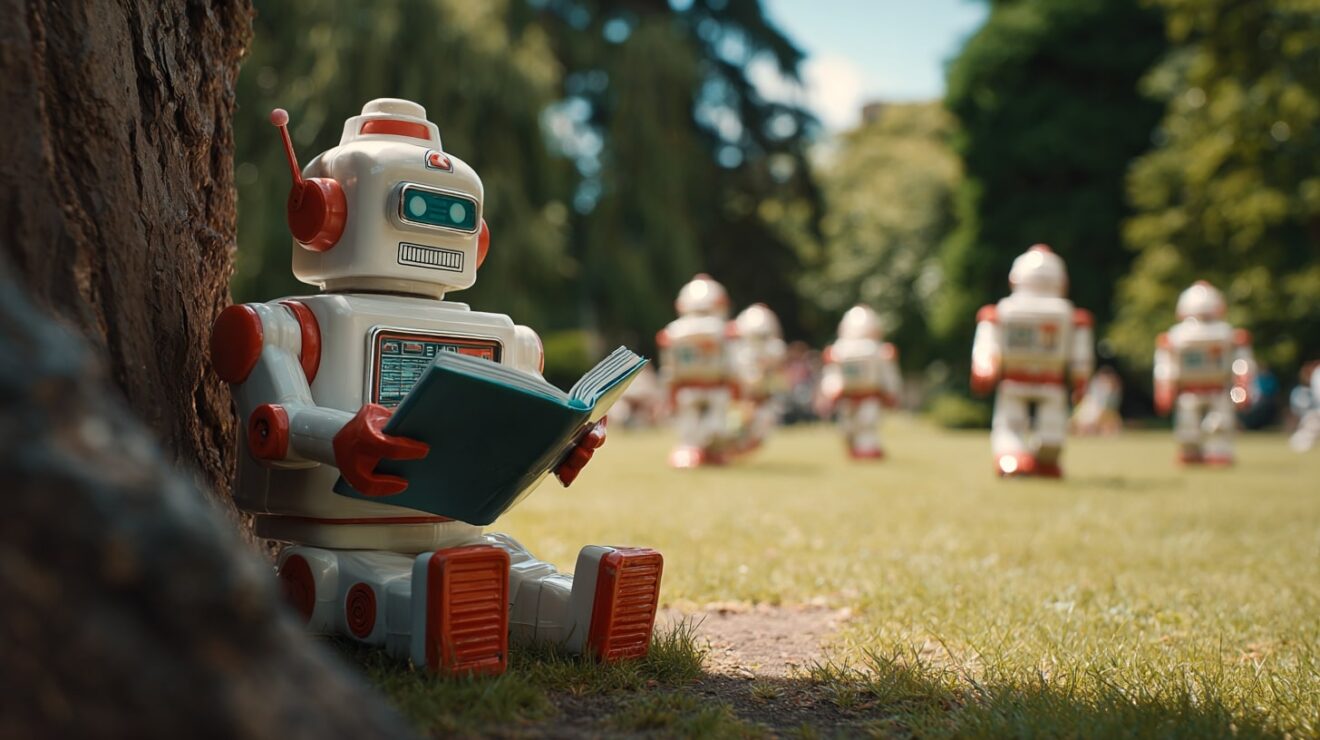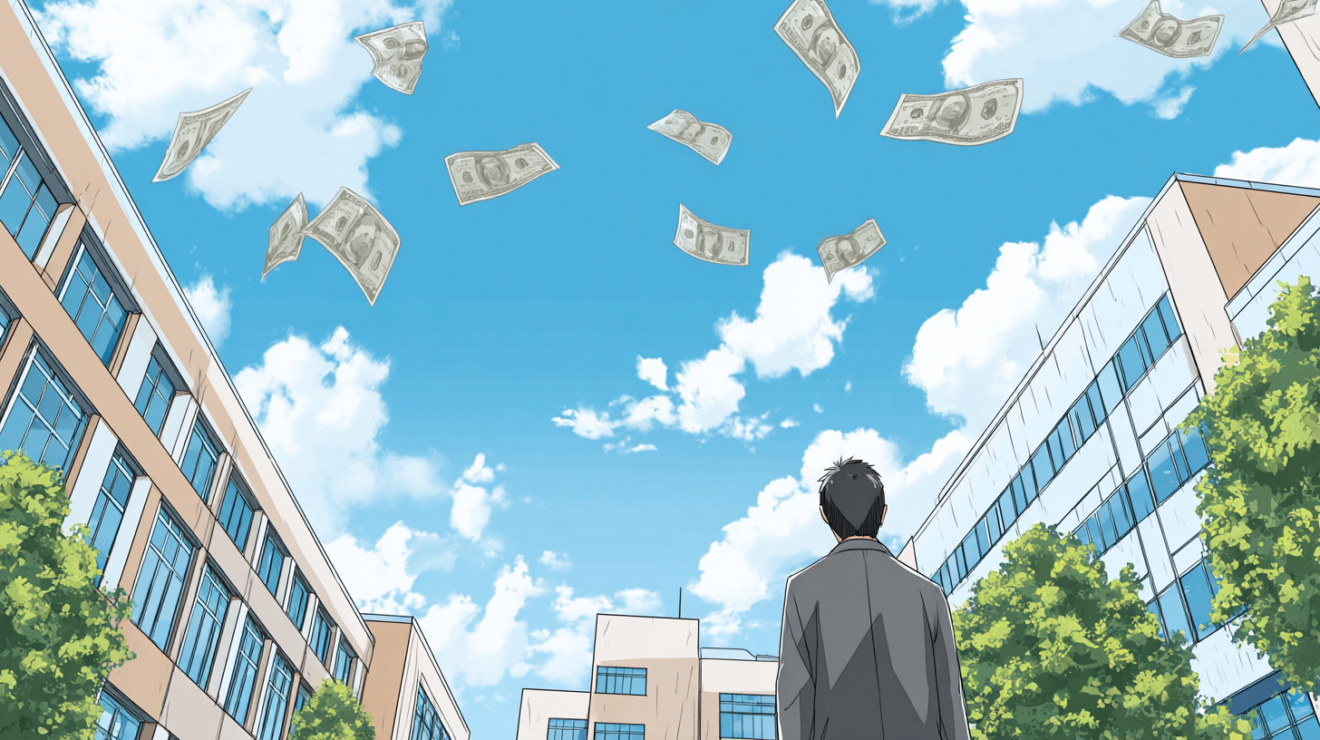Today, after three long months of protests, demonstrators in Serbia have called a general strike – and the government has threatened to retaliate.
Activists are challenging the authority of a populist, nationalist government following months of demonstrations that have brought, at times, over 100,000 people onto the streets.
But for me what’s significant about the growing movement – that some think could yet topple the government – is that it has been almost entirely led by students:
The students in the blockade call on the citizens of Serbia for a total suspension of all activities on Friday, January 24… We don’t go to work, we don’t go to lectures, we don’t do our daily duties. Let’s take freedom into our own hands!
It is a story partly about authoritarianism and tactics, and about how power reacts to protest. But it’s also a story about student movements – both official and decentralised – and how they can both lead, and be co-opted, by others.
Back in November, a concrete roof at the railway station in Serbia’s second largest city Novi Sad collapsed, killing 15 people.
The city is home to the University of Novi Sad – with over 50,000 students and 5,000 staff – and in the wake of the tragedy, a student activist group began to organise protests both in Novi Sad and the capital Belgrade – leaving red handprints at the entrances of government buildings to demand the arrest of officials. Government corruption was their claim.
The group leading much of the activism has been Students Against Authoritarian Rule (STAV) – formed last January from within the Faculty of Philosophy at the University of Novi Sad, and responsible last summer for a two-week blockade of the Rectorate building over what they saw as undemocratic practices in student representation.
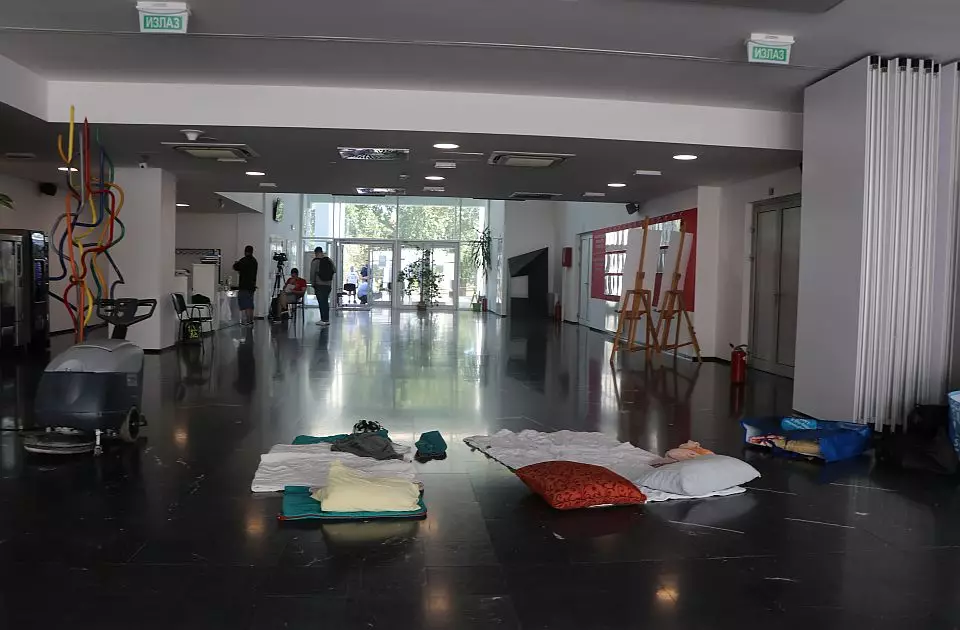
It’s a fix
STAV’s dissatisfaction had its origins in a law passed in Serbia back in 2021, when the National Assembly passed a new Law on Student Organizing as part of a broader set of educational reforms designed to enhance student participation and accountability.
When a small group of us visited the country last year, it all looked pretty positive – it formalises the roles of student parliaments at both faculty and university level, grants them participation in university decision making over issues like teaching, curricula, and regulations, gives them a formal role in advocating for academic and social rights, sets them up to promote extracurricular activities, and establishes them as drivers of national and international collaboration.
It also sets out detailed rules on elections – eligibility criteria, timelines, and protocols to ensure a fair electoral process. But that’s partly where the trouble started.
Last October the Center for Science and Innovation for Development (SCiDEV) – a Tirana-based think tank that works to contribute to democratisation in Albania, the Western Balkans and the European Union – published a comparative analysis of of student perceptions and engagement in student governments in Albania, North Macedonia and Serbia.
It compiled growing concern about the involvement of political parties in the student electoral process in Serbia, a perception of a lack of transparency in election procedures, a belief amongst some students that the electoral process is manipulated or unfair, and a lack of independent mechanisms to monitor election processes and prevent misconduct.
That’s partly because of perceptions that both locally and nationally within SKONUS (Serbia’s NUS), the ruling Serbian Progressive Party (SNS) appears to have played a key role. Milan Savić, who was elected as SKONUS President in 2016 and 2018, was elected to the National Assembly of Serbia as a member of SNS – and activists argue that since then, its leadership has repeatedly aligned itself with government policies rather than defending the student interest.
Current President Margareta Smiljanić has also been linked to the Serbian Progressive Party (SNS) through her involvement with something called the Centre for Education and Youth Development in Belgrade (CEROB) – whose headquarters, critics claim, were used to distribute payments for work in the SNS call centre.
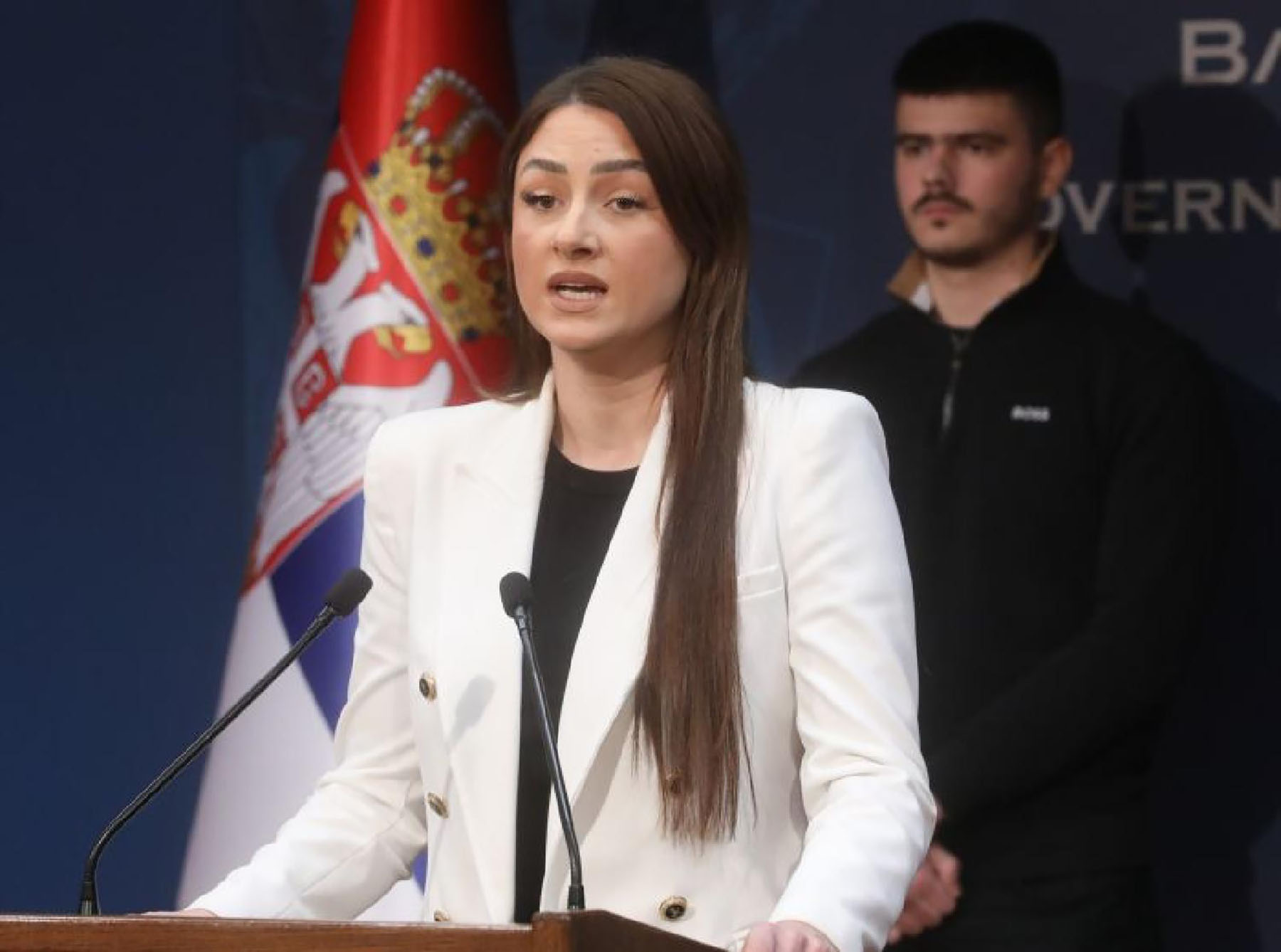
If that sounds fairly tenuous, it’s because it is. It may be that Smiljanić and her predecessors have links to the government – but she’s also one of a long line of “official” student representatives in pretty much every country that get accused of “siding” with university managements or government when engaging in meetings discussing issues like timetabling and food subsidies (two key planks of her manifesto) rather than trying to analyse a broader system and reject a wider administration.
Either way, if the SCiDEV report provided a backdrop of evidence, the Novi Sad tragedy provided an event to rally over for STAV – the collapsed canopy a symbol of the corruption they saw as endemic in the Serbian political system.
Wastewater and tear gas
A week after the tragedy, protests in the two cities had started to grow – flares, red paint and wastewater were thrown onto the City Hall building in Novi Sad, and police responded with tear gas – while a smaller group of angrier protesters wearing masks attempted to enter the building and hand over their demands that those responsible for the canopy collapse face justice.
That night, President Aleksandar Vučić came out to address the public – saying the police were “showing restraint” while issuing a warning that “horrific, violent” protests were underway:
People of Serbia please do not think violence is allowed… All those taking part in the incidents will be punished.
Miran Pogačar, a former philosophy from the Faculty of Philosophy and a prominent activist involved in citizens’ movement “Bravo”, was featured across national news:
One glass window can be mended but we cannot bring back 14 lives. People are angry. Serbia won’t stand for this.
At this stage it looked like the government was going to be able to keep the public on its side – highlighting a violent “former/non student” core as somehow manipulating more mainstream student protesters has long been a tactic of governments facing student unrest – a key feature, for example, of the Millbank student protests over tuition fees in London in 2010.
But days later, the mood changed. CCTV footage of the collapse started to go viral – showing the huge canopy on the outer wall of Novi Sad station building collapsing onto young people below on benches. The government, having attempted initially to draw a line under events by promising a full investigation, was on the back foot.
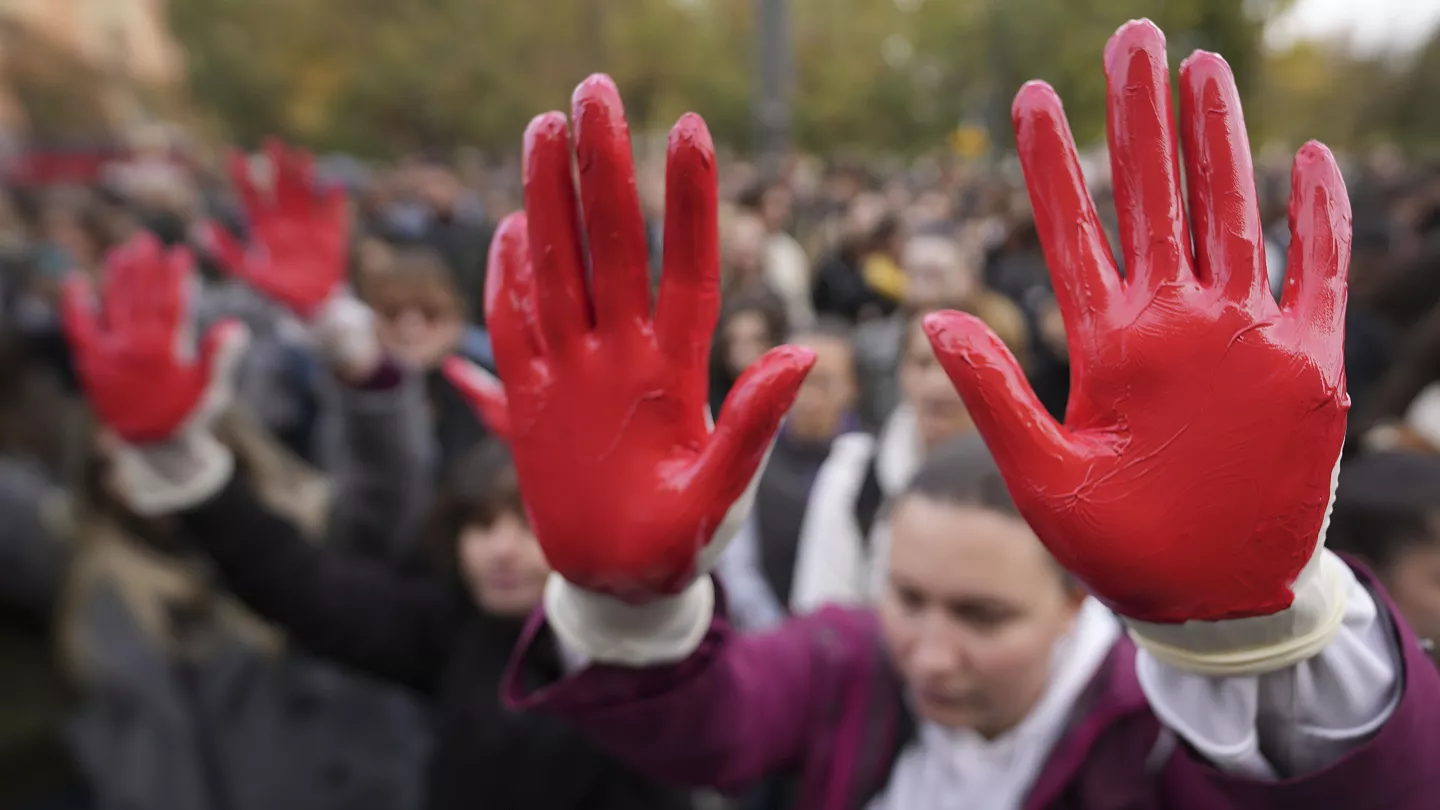
And the student activists of STAV – partly conscious of the role that peaceful student activism played across Central and Eastern Europe in bringing down communism – managed to get its more violent elements under control to secure public sympathy, while the banners painted by students started to become more direct – the most common being red paint on cardboard saying “corruption kills”.
Students leading change
There are good reasons for students to, for want of a better phrase, feel the hand of history on their shoulders.
In the 1960s, Belgrade’s new “Student City” had become a central hub for student solidarity and the sharing of experiences and opinions, associations and clubs between students from both across the country and the world. In June 1968, protesting an accommodation shortage, the lack of voice in university structures and President Tito’s reforms (that had led to high unemployment and forced graduates to leave the country and find work elsewhere), students gathered at Block 1 of Studentski Grad to stage the first mass protest in Yugoslavia after World War II.
Police beat the students and banned all public gatherings, but students then went into a seven-day strike – staging debates and speeches on social justice, and handing out copies of their banned magazines. Tito’s only option was to give in to some of the students’ demands – famously saying that “students are right” during a televised speech. But in the following years, he dealt with the leaders of the protests by sacking them from university and Communist party posts.
Students were also central to the protests against Slobodan Milošević and the broader Yugoslav Communist Party in the late 1980s – ones that began as educational and economic grievances became infused with demands for political liberalisation, academic freedom and democracy. The economic crisis in Yugoslavia had fueled discontent, and it was students at the University of Belgrade that had started to form dissident groups to oppose censorship, restrictions on academic freedoms, and worsening living conditions.
Inspired by other anti-communist movements in Eastern Europe, Serbian students began organizing campus forums in 1988, demanding democratic reforms – and by March 1989, the revocation of Kosovo’s autonomy by Milošević’s regime became a turning point, sparking protests against authoritarianism and the use of force. By May, students shifted focus to broader democratic demands, including free elections and minority rights, with their activism peaking during events like the famous Gazimestan rally and widespread “general strikes” across cities.
Nevertheless, it took another decade for the regime to fall.
The Student Union of Serbia (SUS) got going in 1992 at the Belgrade Faculty of Law, aiming to promote transparency, democratic elections, and enthusiasm within student organisations. Throughout the 1990s, SUS played a key role in student protests against the autocratic regime, notably during the 1996/97 demonstrations advocating for the recognition of local election results and university autonomy.
Back home, Living Marxism – the in-house magazine of the Revolutionary Communist Party that went on to morph into libertarian website/group Spiked! (famous now for its Free Speech rankings of universities and its War on Woke) – argued that Western media outlets and international organisations exaggerated Serbian atrocities while downplaying crimes committed by others such as Bosnian Muslims or Croats.
In 1997, it had published an article claiming that ITN’s footage of emaciated Bosnian Muslim detainees at the Trnopolje camp was misleading – alleging that the camp was not a concentration camp but rather a refugee centre, and that the imagery was manipulated to evoke Holocaust comparisons. It provoked outrage from human rights groups and journalists – and today Spiked! remains resolutely anti-EU and oddly pro-populism.
Back in Serbia, student-led Otpor! continued its tactics of nonviolent resistance, creative protests, and grassroots organising to help unify opposition groups, inspire mass demonstrations, and sustain momentum for democratic reforms. By the turn of the millennium, things were coming to a head – Milošević refused to concede defeat in the September 2000 presidential elections, and protests erupted again on October 5, as hundreds of thousands of Serbians from across the country marched to Belgrade demanding his resignation.
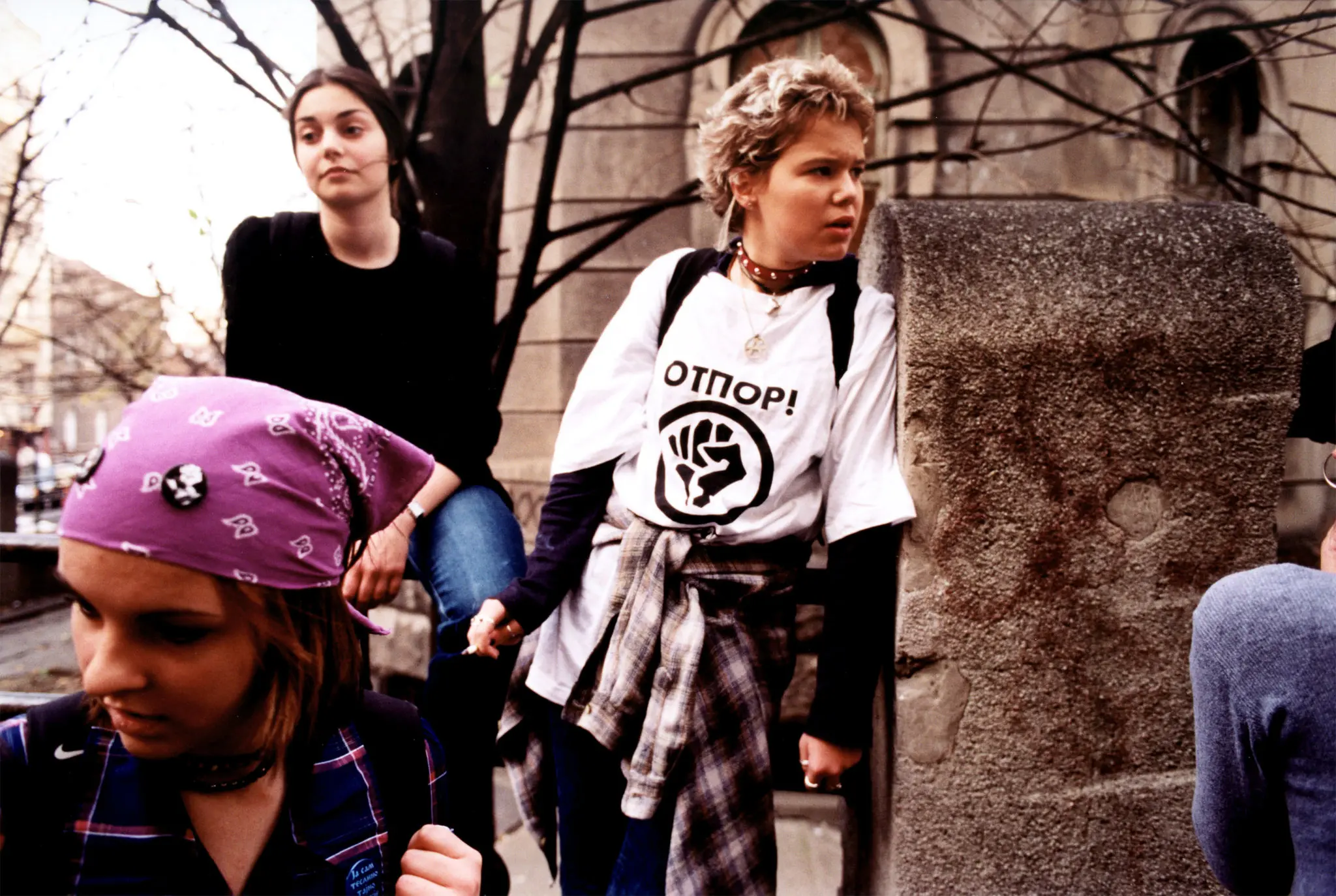
Then, as now, students were accused of being puppets of the West – not least because the slogan Gotov je! had been distributed via 2.5 million stickers and 5,000 spray cans channeled by the U.S. Department of State.
Student protesters stormed government buildings, including the Federal Parliament, and symbolically burned election ballots believed to be fraudulent. Faced with overwhelming public opposition and a breakdown of loyalty within the police and military, Milošević resigned on October 7, 2000, marking the end of his regime and paving the way for democratic reforms in Serbia.
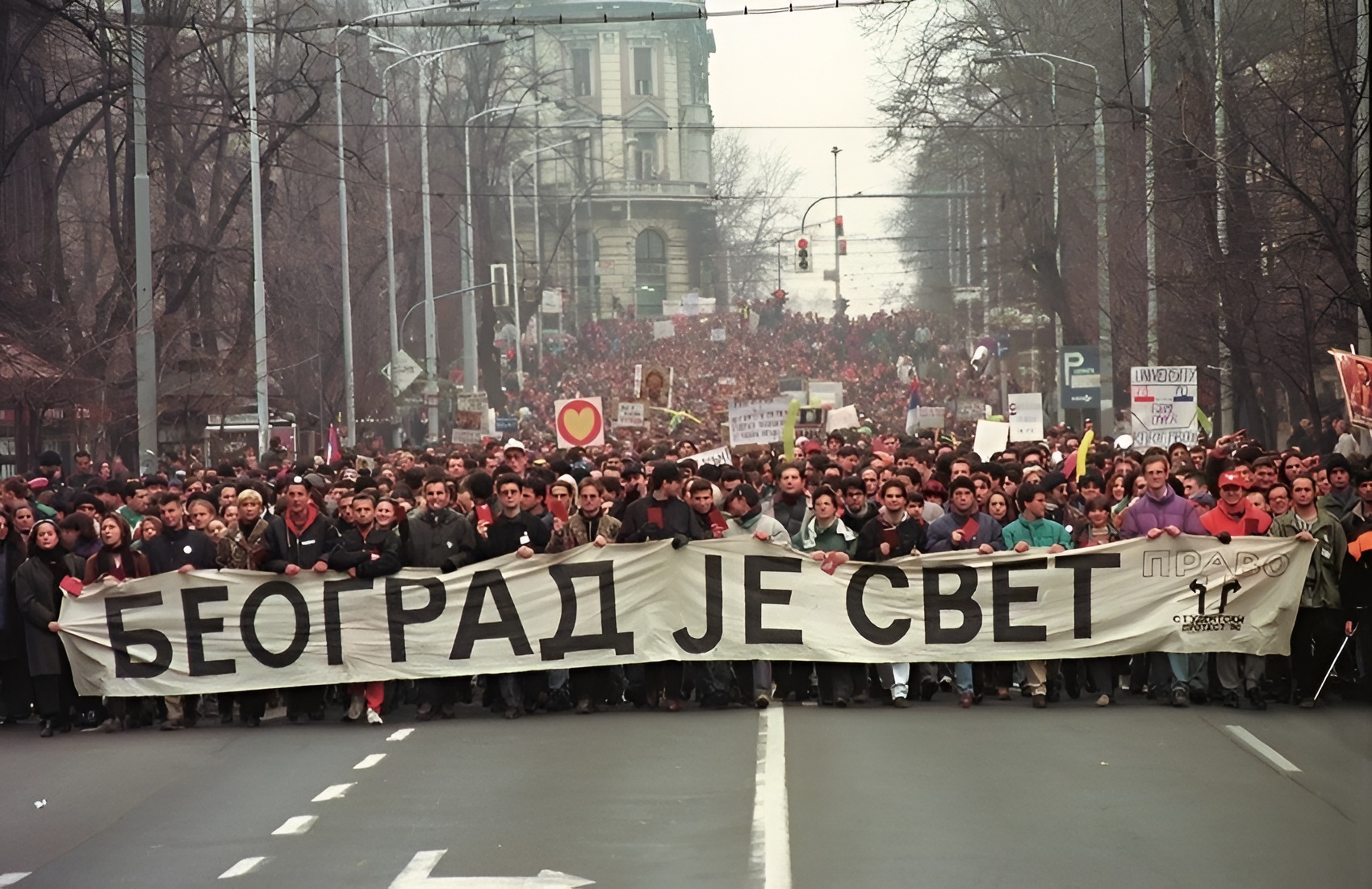
Few believe that communism could have fallen in the way it did either in Serbia or across Europe more generally in that period without students – every country in the region has its own set of stories about how students inspired wider movements. The question now, in Georgia, maybe soon in Romania and more generally across the region, is whether students will play a key role again in bringing down populists often accused of being in bed with Russia.
Legitimate representatives
By December 5th 2024, unrest was building in Belgrade. A group of students at a protest symbolically turned their backs on the Minister of Construction, Goran Vesić during a public appearance in the capital. Hours later he’d resigned, but they’d secured the support of the Bar Association of Serbia, which announced a one-day strike citing “systematic and long-term interference by the executive branch in the work of the judiciary”, and problems with the separation of powers in a democratic society.
Dejan Bagarić, a PhD student from the Faculty of Philosophy and one of the perceived ringleaders of STAV, was jailed for up to 30 days on charges of “reckless theft” and “assault on an official” after taking and returning a phone from a journalist filming a protest incident involving his girlfriend. And Branko Rodić, another student from Novi Sad, was reportedly assaulted by two people believed to be members of the National Assembly’s security, who knocked him to the ground and hit him in the face.

Six days later, students gathered in front of the headquarters of RTS, Serbia’s public television station – protesting over coverage of President Aleksandar Vučić’s claims that the demonstrators were “funded by Western countries seeking to destabilize Serbia”.
The crisis growing, Vučić then pulled an age-old tactic beloved by governments and university managements over the years – he ostentatiously held a meeting with the SKONUS President Margareta Smiljanić and other “representatives of the legitimately elected students” at which he announced a housing scheme offering young people to purchase €75,000 flats with a deposit of €1000.
SKONUS had been formed in the slipstream of the fall of Milošević in 2005 – established to inject some resource into student representation and “officially” represent students at accredited universities in Serbia, with its origins tied to the country’s new Law on Higher Education. Initially, it played a key role in higher education reforms like Bologna and promoting student mobility, and in 2014 worked alongside SUS when the Serbian Progressive Party (SNS) came to power and cut the number of exam periods from six to five and cut the funding for students’ fifth year of studies.
But since then, student activist groups have grown suspicious of SKONUS and its leadership’s role in “negotiating” with government and avoiding “non-student” issues. Hence when Margareta Smiljanić responded to Vučić’s deal in December, she both welcomed the announcement, and played up her concern for students’ education:
The reason we organized this meeting is because we were elected not to hold political positions, but to hold student positions, to answer the students who ask us questions every day about what will happen to the further teaching process and who will ensure the quality of education for the year 2024/2025. We requested from the Government of the Republic of Serbia and the Ministry of Education that we be admitted to the meeting and I would like to thank them for accepting us in record time today.
She went on to say that no-one had given her an answer on reimbursement of tuition fees, compensation and exam registration, and whether university buildings would re-open at all in the new year:
These are all questions that are troubling students, and I believe parents as well. We believe that it is of crucial interest for deans, rectors, and the academic community to answer because 230,000 academics are tormented by these questions. We demand urgent answers.

Whether you believe that Smiljanić was a government stooge that was part of a propaganda effort to brand the activists as extreme and anti-education, or a student leader doing her best to focus on student issues, is fairly moot – either way, Vucic took to the airwaves to build on the divide and rule tactic:
So, all the [protest] demands have been fulfilled, and we expect those who made the demands to say their demands have been fulfilled and to return to classes. But [if not] it will [then] be clear to the entire public in Serbia … and to all the citizens of Serbia that there were never any demands, but that it was [pure] politics.”
STAV was having none of that – branding Smiljanić a sell-out and claiming that some of its activists had started to be called in for one-to-one meetings with university managers about their academic “progress”, who had themselves been threatened with the sack if they failed to get students back into classrooms.
6-7 seconds
Things continued to escalate. By mid-December, some 62 of the country’s 80 HEIs had seen a student-led blockade of one sort or another. Then on December 10 a man drove his car into a group of participants, injuring four musicians who’d joined the protests from the Belgrade Philharmonic Orchestra.
By December 13, farmers in central Serbia had joined the protests by blocking a motorway with tractors, expressing solidarity with the students and amplifying calls for governmental accountability – and two days later visibly frustrated Prime Minister Miloš Vučević responded to question with “you can’t bring down a country because of 15 people who died, nor 155, nor 1,555”, and was forced to apologise.
By December 22, the crowd of protesters had swelled again – with over 100,000 gathering in Slavija Square in Belgrade where students had been joined by numerous civil society groups. On Christmas Eve Vučić then also mis-stepped in an interview – claiming that if he wanted to, he could deploy special forces to disperse student protesters “in 6-7 seconds”.
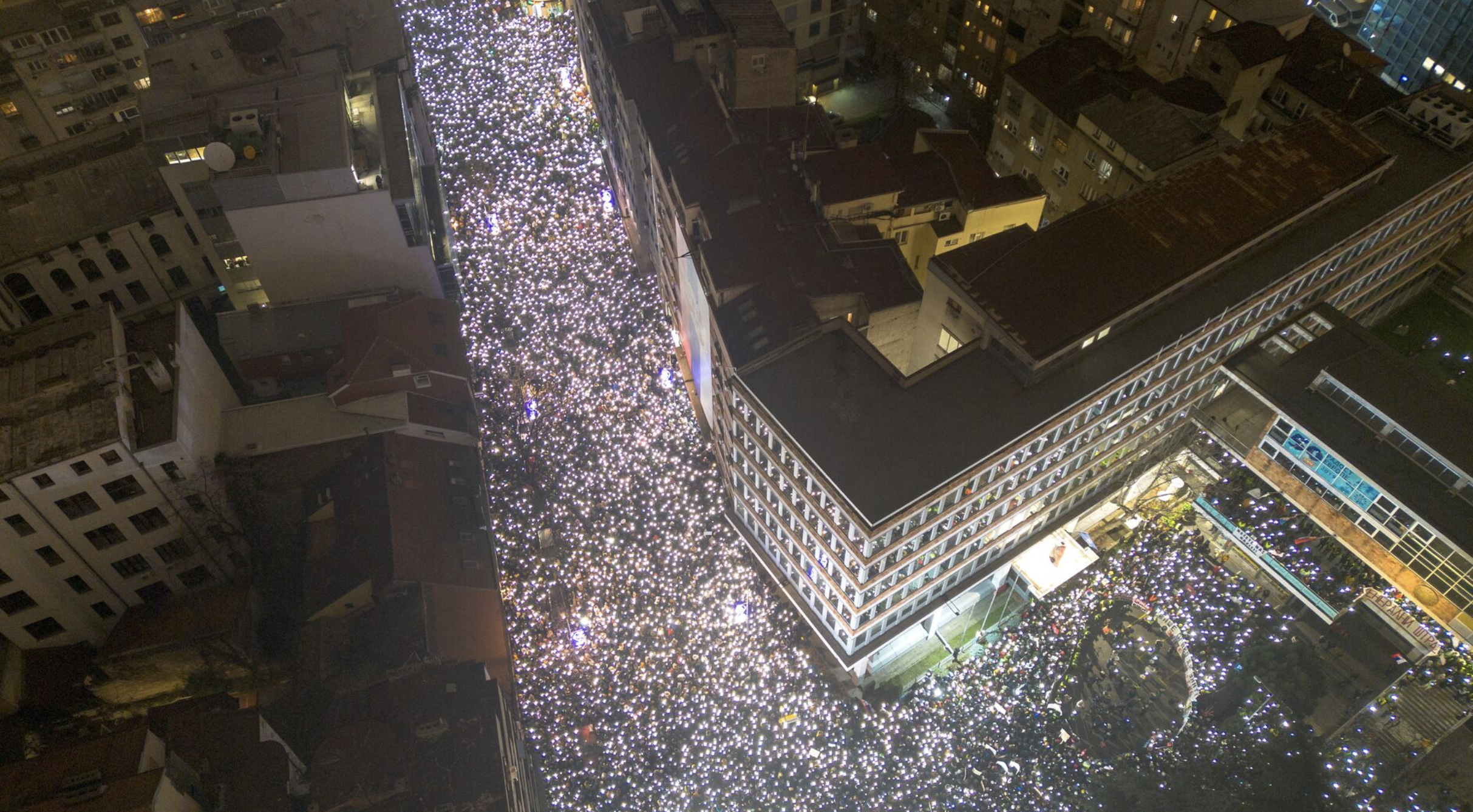
Demonstrators delivered 1,000 letters to the office of Public Prosecutor Zagorka Dolovac, urging her to fulfill her duties and address the protesters’ demands – and stories were swirling that agents from the Security Intelligence Agency (BIA) had made visits to the workplaces and homes of some of the student organisers’ family members.
And by now, protests had spread to other Serbian student cities too. In Užice, over 2,000 gathered in front of the city hall to express their support for the movement – and authorities attempts’ to kill that off by turning off street lights were met with portable generators.
Vučić then publicly accused eight Croatian students – led by twin brothers Lazar and Luka Stojakovic from the Faculty of Organisational Science at Belgrade University – identified by pro-government daily newspaper Vecernje Novosti as protest leaders paid by Croatia’s secret service. Croatian Prime Minister Andrej Plenković dismissed Vučić’s claims as “laughable.” But Lazar and Luka were emboldened:
Corruption entered every single layer of our society and it is the main cause of roof collapse and killing of 15 people.
On New Year’s Eve into New Year’s Day 2025, tens of thousands were on the streets, chanting “There is no new year – you still owe us for the old one” – and two weeks later Margareta Smiljanić popped up again on TV, arguing that the the “destruction of the higher education system” was underway, that the protest participants were “not student representatives”, and calling on universities to launch surveys to get a “clear picture” of what the majority of students want:
We have generations of students who enrolled in studies during the coronavirus. That generation lost two years of normal classes. During the coronavirus, they had make-up and online classes, and now they have classes interrupted again. So we have generations who will graduate with a much lower quality of knowledge… I think that the radicalization of any protests is not good and that through dialogue we can achieve greater goals.
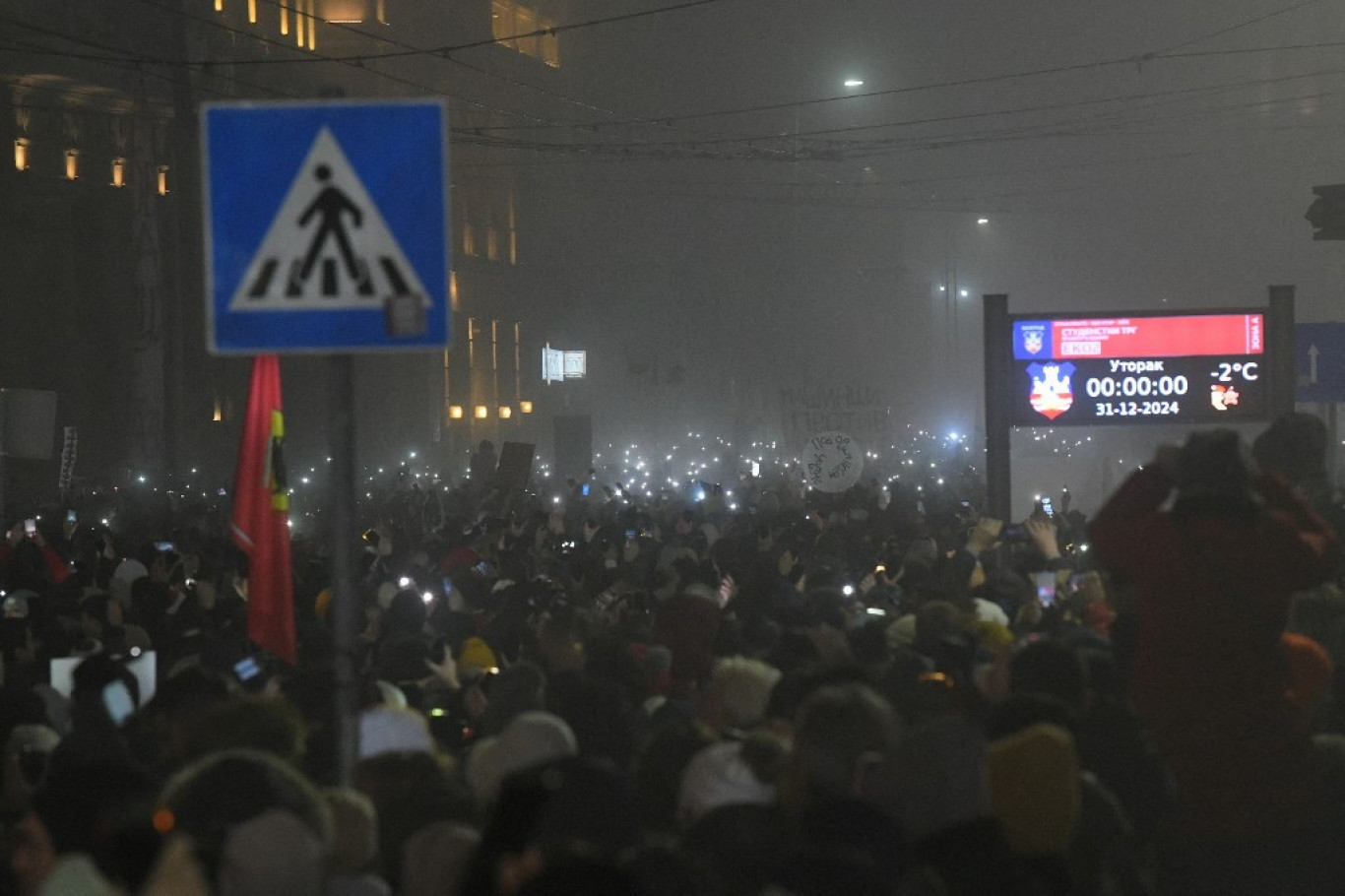
But Biljana Đorđević – co-president of the Green-Left Front, and an assistant professor at the Faculty of Political Sciences in Belgrade, responded with another allegation often thrown at student representatives – that she’s been studying for a full decade and has been a student official for eight years:
She was hired… as the President of a student organization that the regime of Serbian President Aleksandar Vučić hires to impersonate students when necessary.
Since then numbers have grown again – last Friday, during another massive protest in front of the Radio Television of Serbia (RTS) building in Belgrade, tens of thousands of students and academics observed a 15-minute silence to honour the victims of the Novi Sad tragedy, and protesters chanted slogans advocating for a general strike.
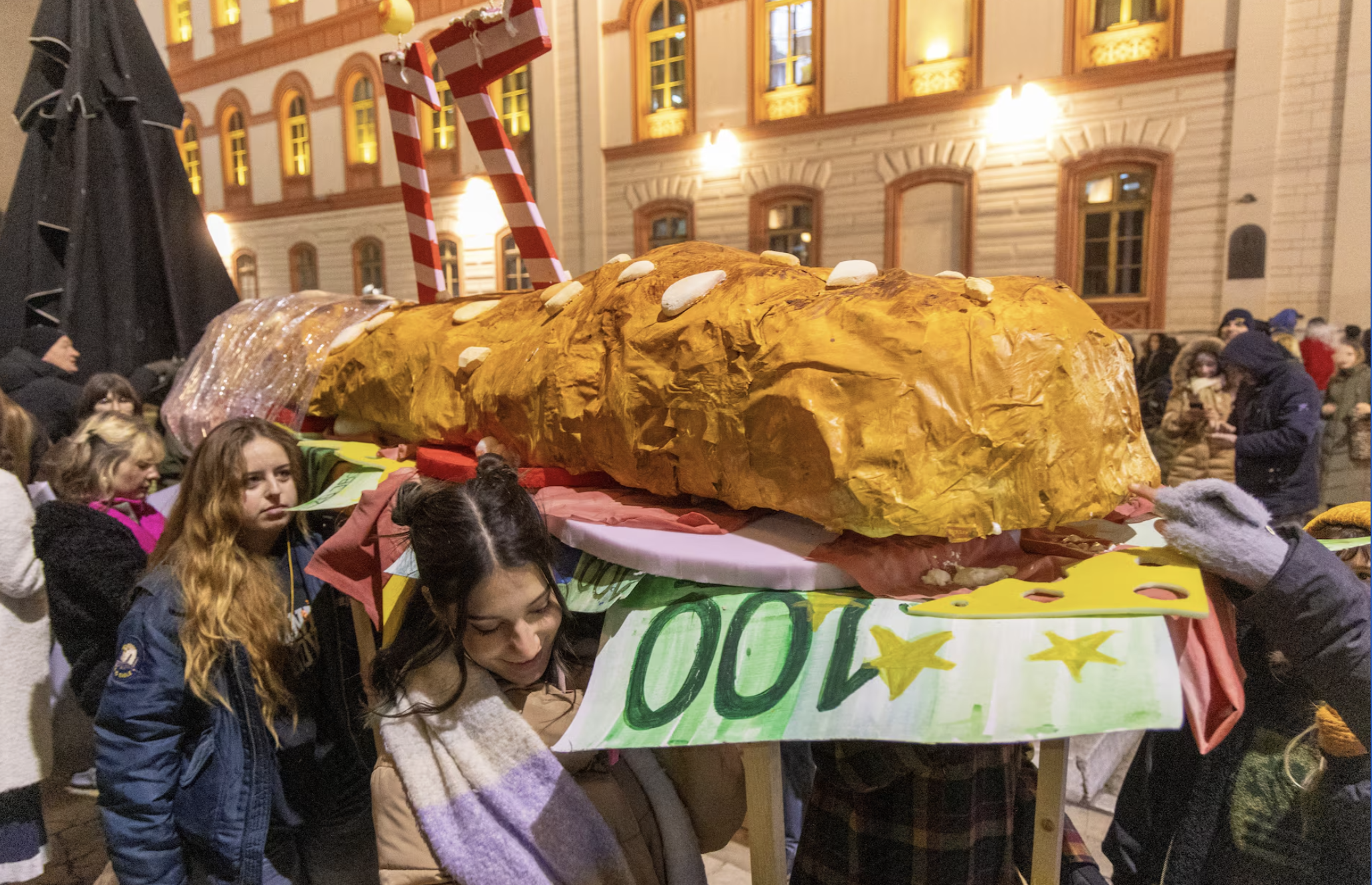
This regime stands no chance
You can pretty much flip a coin at this point on whether the movement will grow and bring down the government, or whether concerns of students about what is starting to look like a write-off of the academic year altogether will somehow see Vučić and his government survive.
And as was the case in both the sixties and the late eighties and nineties throughout the former Yugoslavia, it really rests on whether the wider public’s sympathy with “the students” grows or wanes. There are reports of people donating food, businesses providing supplies, taxi drivers offering free fares, and farmers pledging to protect protesters with tractors – but some sense too that parts of the public are tiring of the disruption as it spreads. Who they blame will matter.
Ljubica Oparnica, a professor at the Faculty of Education at the University of Novi Sad, thinks that STAV and “unofficial” student movement will win out:
I am truly fascinated by the way students are working together. Their solidarity is a fortress that cannot be breached. If we all share the same vision — and here it is clear that we all want a new system, a new and different era — this regime stands no chance.
And while the country’s four biggest teaching unions struck a deal with the Serbian government on pay increases earlier this month, plenty of schools and teachers have refused to start the new term – with Vucevic now threatening to send in inspectors and sack teachers in schools that take part and go on strike today.
“I am not threatening anyone,” said Vucevic to RTS this week. “I am merely urging everyone not to play with children and the education system”. Dusan Kokot of the Independent Union of Education Workers of Serbia said that education can’t thrive in a society “plagued by systemic corruption”:
Education cannot flourish while decision-makers are plagiarists, forgers, usurpers and manipulators.
In one final, and some say desperate move, Vucevic this week offered a non-binding “advisory referendum” on the government – while opposition leaders demanded a transitional government to ensure fair elections.
Much now rests on the success or otherwise of today’s general strike. Some still think that a mixture of propaganda, counter-protests and public concern about the grinding to a halt of education in general will see the protests peter out – but Ljubica Oparnica is less sure:
They won’t give up easily because they enjoy immense privileges. That’s why change seems impossible. But I believe this government will collapse suddenly, like the fallen canopy [at Novi Sad train station]. We’ll all be surprised. I think they’ve reached the end of their strength.
Students, on the other hand, almost certainly haven’t.






